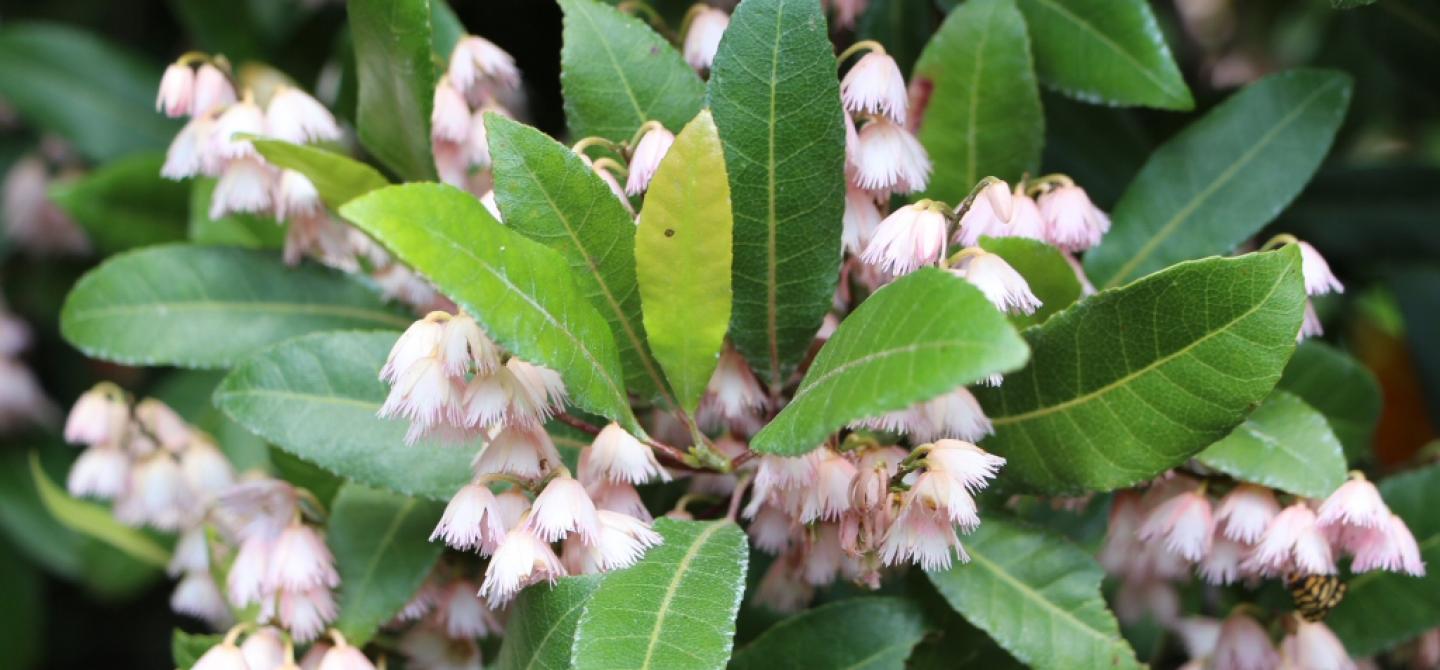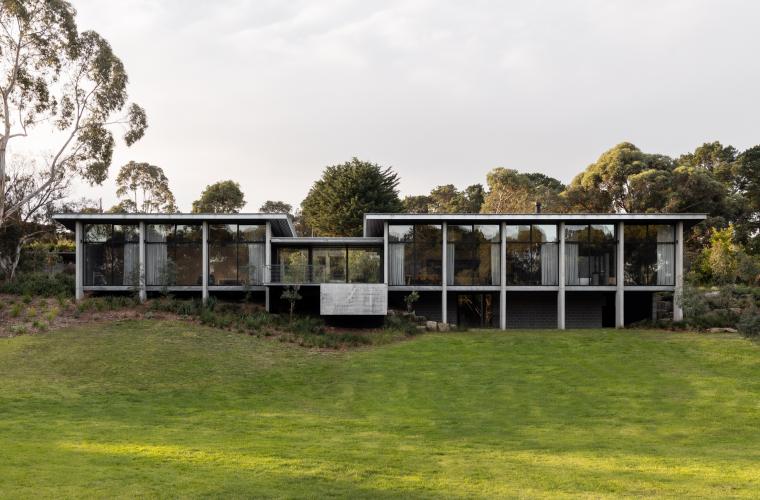Thermeco Loves: Edible Native Trees
15th June 2022
This one's for our NSW friends: Looking for Australian bush foods suited to Sydney climates but unsure where to begin? Peter Cooley from IndigiGrow has all the tips to get you started.
Bush foods have been harvested, cooked and used as food & medicine for tens of thousands of years by Aboriginal and Torres Strait Islander people.
Peter Cooley, a proud Bidjigal man and founder of IndigiGrow, is growing local native plants and bush foods at the nursery based at La Perouse Primary School. IndigiGrow is a social enterprise which employs young First Nations people and works to regenerate local Sydney plants now known as Eastern Suburbs Banksia Scrub or ESBS, a critically endangered native ecosystem. Planet Ark spoke to Peter to get some expert tips on how to grow bush foods and inspire your friends and family to start growing too!
Planting native trees in your yard or community brings so many benefits – food, colour, shade and attracting wildlife! If you register your tree you will also help Sydney reach its target of planting 1 million trees in Greater Sydney by the end of the year. This initiative is part of the NSW Government’s Greening our City Premier’s Priority which aims to combat the urban heat island effect by increasing green cover across Greater Sydney. Make your tree count by registering it here – logging your tree will help track the data across Greater Sydney suburbs so we can create a more liveable future for everyone.
Want a free tree? Check out the free tree giveaway program run by the NSW Department of Planning and Environment.
1. Lemon myrtle (Backhousia citriodora)
A well-known Australian native tree with fragrant lemon-scented leaves. Indigenous Australians have long utilised the healing properties of lemon myrtle as part of their traditional medicines. They're super tough and one of the easiest bush plants to grow. They don’t mind being grown in pots and they make an excellent balcony tree in a sunny spot.
Growing tips:
A large tree which can grow up to 15m tall. It is naturally occurring in the coastal rainforests throughout QLD and in some areas of NSW.
Although preferring warmer and wetter climates, it is generally low maintenance, growing well in both pots and indoors and doesn’t get to peak height when grown in pots.
Health benefits:
A natural cleanser for skin health, improves concentration, aids with weight loss and detoxing, soothes sore throats, natural deodorant and air freshener, acts as a natural diuretic to flush out the kidneys, liver and bladder, and it has anti-viral and anti-inflammatory properties.
Cooking tips:
Use in dips, sauces, salads, curries, breads, biscuits, cakes, and desserts! Or keep it simple and put a leaf in hot water to release the minerals and enjoy the therapeutic benefits.
Lemon myrtle solutions can also help protect other plants from pests and humans from insects and mosquitoes.
2. Lilly Pilly (Syzygium sp.)
This beauty ticks all the boxes: easy to grow, they attract pollinators, they’re beautiful to look at and you can make jam from the fruit or eat them straight from the plant. There are many different varieties, be sure to check with your local nursery to make sure they’re edible!
Growing tips:
Most garden varieties produce vibrant red, purple or pink berries.
They are fast-growing and make an excellent hedge or screen plant.
Suitable for growing in pots.
Health benefits:
Rich in vitamin C, reduces inflammation, anti-aging, brightens the skin and improves collagen production.
Cooking tips:
Use in cakes, bread, sauces, chutneys, jelly, jam, gin – lilly pilly everything!
3. Blueberry Ash (Elaeocarpus reticulatus)
This striking beauty belongs to the Elaeocarpaceae family and is an Indigenous shrub or small tree growing in rainforest and coastal scrub along the east coast of Australia, from southern Queensland to Tasmania. The pretty fruit attracts many birds like the regent bowerbird which collects them for their blue colour. Other birds that eat the fruit include the Wonga pigeon, crimson rosella, figbirds, white headed pigeons and olive-backed orioles. Plant one for the birds!
Growing tips:
Small tree or small shrub that grows between 3-15 m tall, depending on location.
Forms a dense and leafy crown, making it an attractive space filler.
Thrives in both bushland and in gardens around Sydney and can tolerate low fertility soils.
Bares white or light pink flowers and/or bright blue berries for most of the year.
The new growth is a lovely red colour, which contrasts beautifully with the dark green leaves.
Health benefits:
The juice of the ripe berries has been used medicinally for boils and sea ulcers. Studies have shown the fruit has a high antioxidant capacity.
Cooking tips:
Crush the berries and make jam!
4. Sandpaper Fig (Ficus coronata)
Australia has over 40 native figs and the Ficus coronate is one of the most common varieties. The leaves have a rough texture and have been used to sand down tools, treat ringworm and make fire. The sandpaper fig is hardy, easy to grow and will attract birds, lizards, bees, and insects. If you don’t have a lot of space, you can try growing it in a large pot outdoors or in a pot indoors to create a bonsai tree!
Growing tips:
Medium tree that can grow up to 15 m tall, depending on location. Like most figs, this species is better suited to backyards with lots of space, if planted in the ground.
A hardy and low-maintenance plant that can tolerate most conditions, including low fertility soils and low shade.
Can also be shaped to form a hedge, as it tolerates pruning well.
Health benefits:
In bush medicine the sandpaper fig leaves were used to relieve insect bites. The leaves of the fig were also used to treat ringworm infections and wounds.
Cooking tips:
Add the fruit to a cheese platter – yum!
5. Illawarra plum (Podocarpus Elatus)
A common rainforest tree endemic to the east coast of Australia. Illawarra Plum is also known as the Daalgaal, Goongum or Plum Pine.
Growing tips:
Medium to large pine that can grow up to 40 metres tall in bushland, and around 5-10 metres tall in other locations. Can be grown in a pot and/or pruned to manage its size.
Common in rainforest areas, this is a versatile plant that can tolerate a range of conditions and soil types, growing well in both full sun and part shade.
As Illawarra Plum plants are either male or female, you’ll need to plant both types to allow cross-pollination for fruit production.
Female plants mature and bare juicy purple berries after 3-5 years. The berries fall to the ground when ripe.
Health benefits:
One study shows the Illawarra plum can reduce the proliferation of colon cancer cells. The fruit contains antioxidants that are beneficial to the gastrointestinal tract.
Cooking tips:
Use as a complement for chilli, garlic, and marinades, or use in sauces, preserves, muffins, cheesecakes, and fruit compotes. When cooking with Illawarra plums, stainless steel utensils are recommended over aluminium to prevent bitterness.
Make your tree count by registering it here – logging your tree will help track the data across Greater Sydney suburbs so we can create a more liveable future for everyone.
Source: https://planetark.org/newsroom/news/5-edible-native-trees-to-grow-in-sydney





